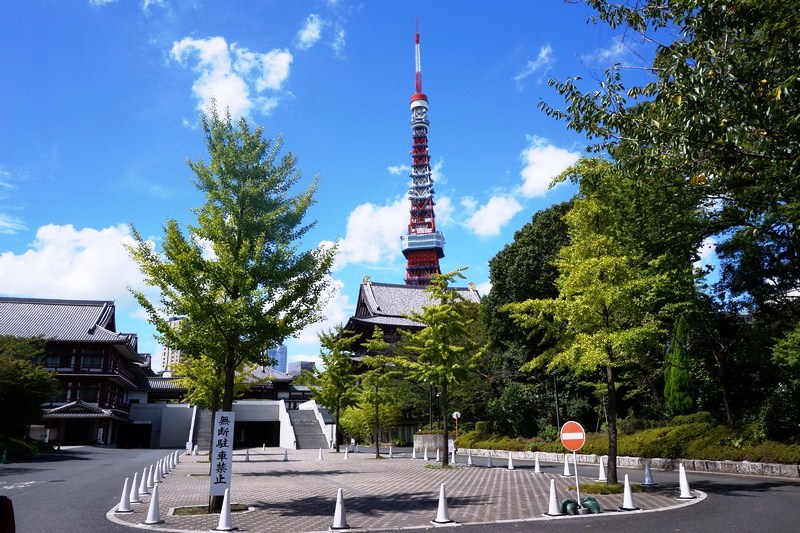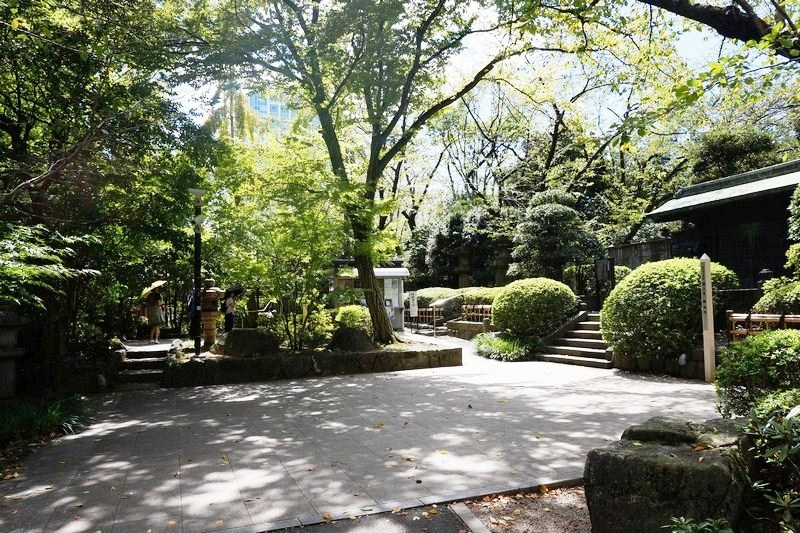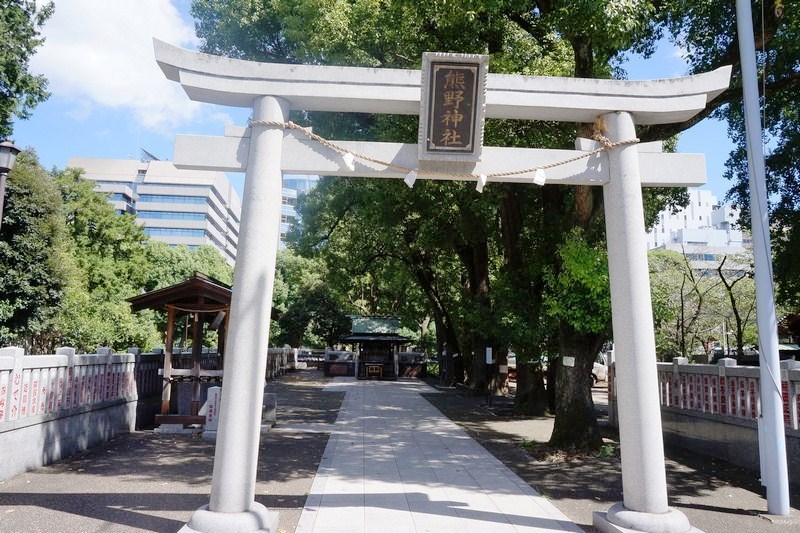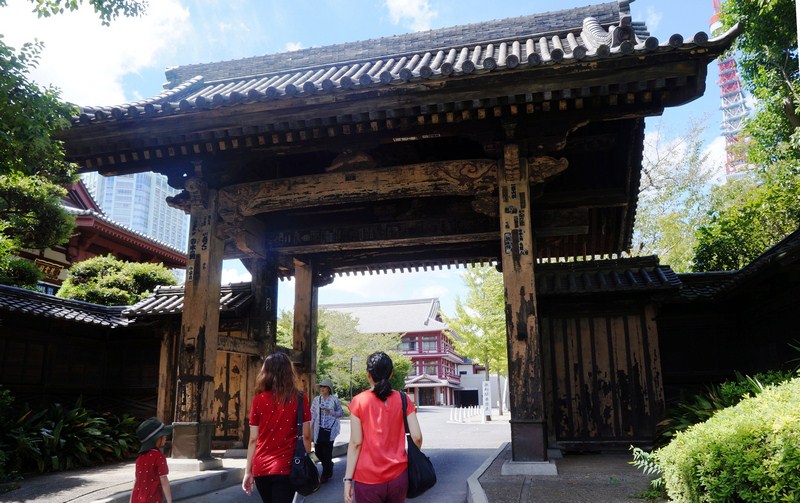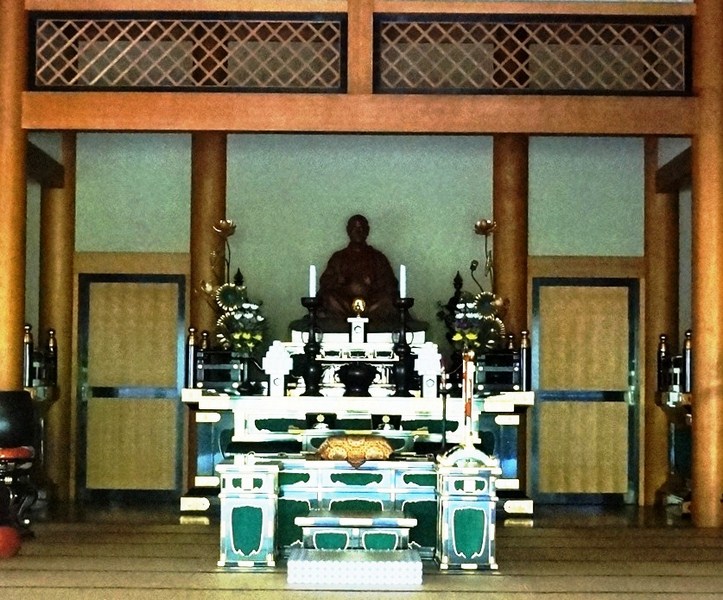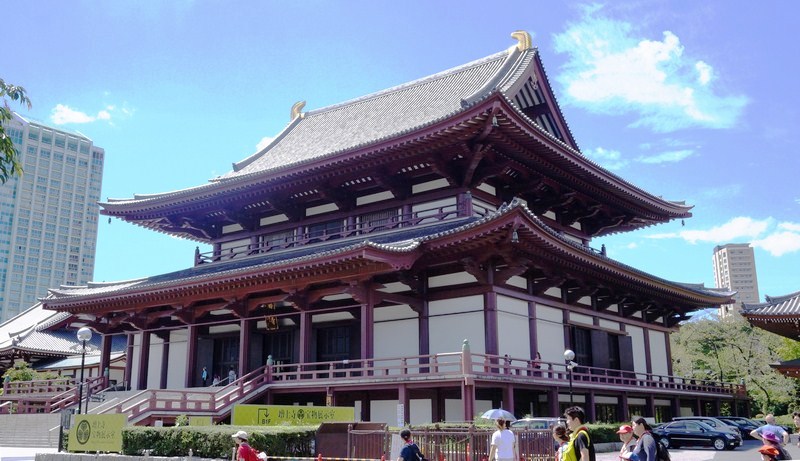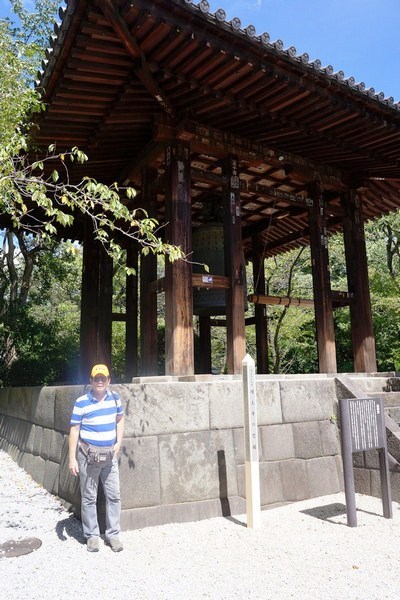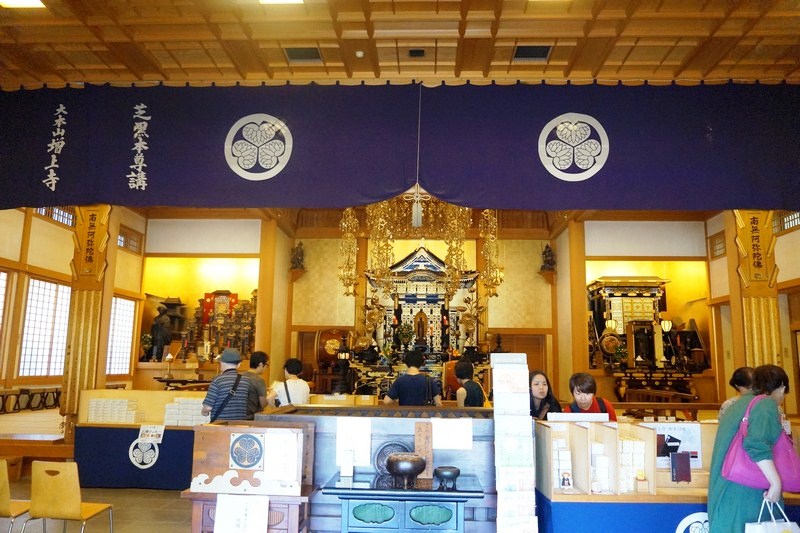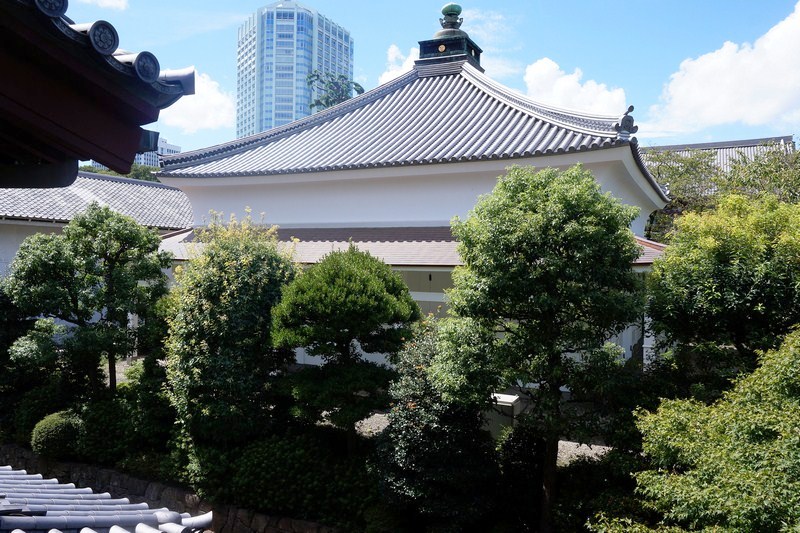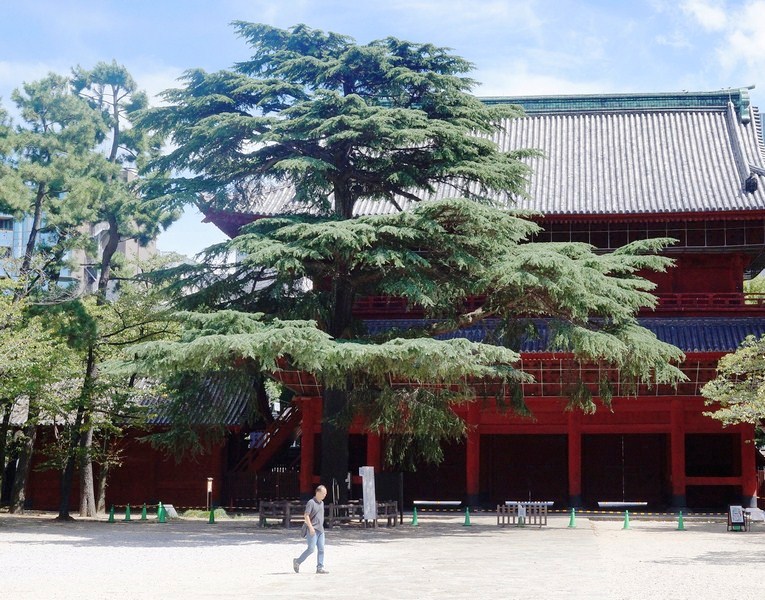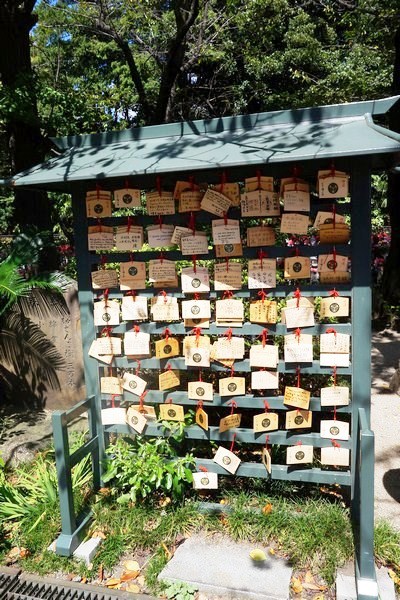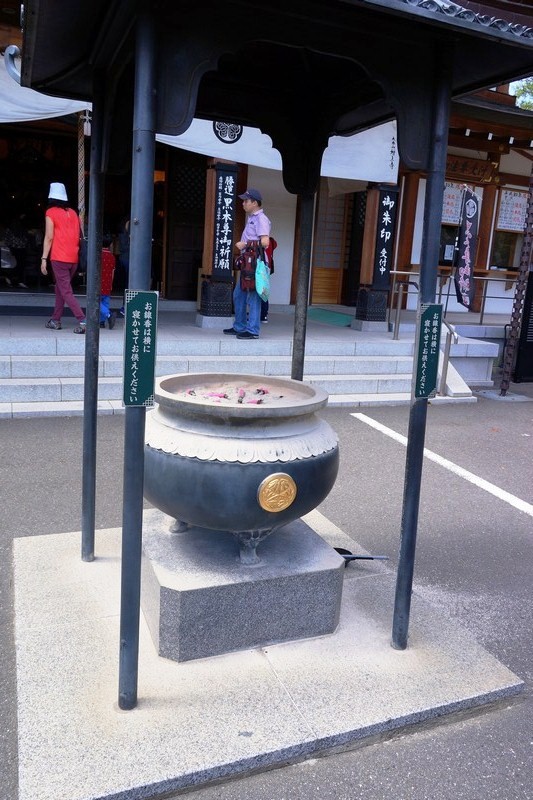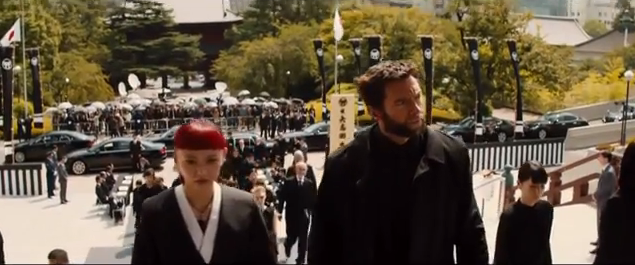It was our fourth day in Tokyo and, after breakfast at the hotel, we visited the San’en-zan Zōjō-ji (三縁山増上寺), a Jōdo-shū Buddhist temple located in the Shiba neighborhood of Minato. The main temple of the Jōdo-shū (“Pure Land”) Chinzei sect of Buddhism in the Kantō region, it was founded in 1393 as the sect’s eastern Japan seminary.
During the Edo period, Zōjō-ji, together with Kan’ei-ji, were notable for their relationship with the Tokugawa clan, the rulers of Japan. Zōjō-ji was the Tokugawa‘s family temple and six of the 15 Tokugawa shoguns were buried in the Taitoku-in Mausoleum in the temple grounds. Kazu-no-Miya Chikako, Tokugawa Iemochi’s wife, is also buried in Zozo-ji. Tokugawa Ieyasu had the temple moved, first to Hibiya and then, in 1598, at the time of expansion of Edo Castle, to its present location.
With the fall of the Tokugawa shogunate, the grounds took on the character of a public park. Parts of the former grounds of the temple are now occupied by a park and two hotels. The 65-hectare Shiba Park, Japan’s oldest public park (designated as such in 1873), is built around the temple, with the Tokyo Tower standing beside it.
At its peak, the temple grounds covered an area of 826,000 sq. m. and contained 48 subsidiary temples, over 3000 priests and 150 temple schools but, following the decline of Buddhism during the Meiji period (1868-1912), the temple’s original buildings, temples, mausoleums and the cathedral were destroyed by fire, natural disasters or burned in air raids during the Bombing of Tokyo in World War II.
After the war, reconstruction began. In 2015, a Treasure Gallery was opened on the underground level of the Daiden. Currently, it houses paintings of Kanō Kazunobu and a model of the Taitoku-in Mausoleum. Additional graves are located in the cemetery behind the Daiden.
From our hotel, we walked to the nearby Akasaka-Mitsuke Station and took the short, 12-min train ride to the Hamamatsucho Station on the JR Yamanote and JR Keihin-Tohoku Line. The temple was a 10-min. walk from the station. It is the first indication that we have reached Zojo-ji Temple is the Daimon Gate, the concrete reconstruction of original main gate of Zojo-ji destroyed during World War II. As it is now located along a street, cars pass underneath it.
About 200 m. past the Daemon Gate is the temple’s famous, 21 m. (69 ft.) high, 17.6 m. deep and 28.7 m. wide, 2-storey Sangedatsumon (仏殿), which serves as the inner main gate. San means “three,” gedatsu means moksha or liberation/freedom, and mon means “gate.” Dating from 1622, it is the temple’s only original structure to survive the Second World War and is, therefore, the oldest wooden building in Tokyo. It has been designated an Important Cultural Property.
The majestic and magnificent, vermilion lacquered gate was designed in three sections to symbolize the three stages that one must pass through to achieve nirvana. If someone passes through the gate, he can free himself from the three passions of greed (貪 Ton), hatred (瞋 Shin) and foolishness (癡 Chi).
On the upper floor of the gate are enshrined an image of Gautama Buddha (Shakyamuni), flanked by Samantabhadra and Manjusri (two attendant bodhisattvas), and statues of the Sixteen Arhats (disciples of the Buddha), all created by Buddhist image sculptors of Kyoto when Zojo-ji was built.
We entered the temple via the Kuromon (Black Gate) which dates back to the mid to late 17th century. Immediately to the left is the Ji-unkaku Hall. It has a multi-purpose hall on the ground floor. A long flight of stairs brought us to the Kaisando on the second floor. It enshrines an image of Shoso Shonin, the founder of Zojo-ji.
The Daiden (Great Hall), rebuilt in 1974, is a blend of traditional Buddhist temple architecture and modern architecture. It enshrines the main image (honzon) of the Amida Yosai Buddha which was made during the Muromachi Period (1336-1573). To the right of the Amida Buddha is an image of Great Teacher Shandao, who perfected China’s Jodo (Pure Land) Buddhism), while at its left is an image of Honen Shonin (who founded Japan’s Jodo Shu).
Other structures within the grounds include the Ankokuden, the Kyozo (Sutra Repository), the Shoro (bell tower), Enko Daishi Hall and Koshoden. The Enko Daishi Hall enshrines Enko-daishi, another name of Honen, who is the sect founder of Jodo Buddhism. The Dai-Nokotsudo (or Shariden), made with stone in 1933, is where the bones of the deceased are stored.
The Koshoden, a lecture hall and seminary for “cleansing soul and fostering the vigor to live,” has a coffered ceiling features pictures of flowering plants, donated by 120 pious Japanese artists and fitted into coffers.
The Ankokuden, located to the right of the Main Hall of the temple, was built in 2010. It enshrines the Black Image of Amida Buddha, a Buddhist image deeply worshiped by Tokugawa Ieyasu which brings victory and wards off evil.
The hall is also used as a prayer hall. The image is shown to the public 3 times a year (January 15, May 15 and September 15).
The Kyozo, built in 1613 with financial aid from Tokugawa Ieyasu, serves as a storehouse where sutras (important cultural documents) are stored on red, octagonal-shaped revolving bookshelves at its center. It has a thick wall to resist fire and its door is usually closed. The Kyozo has also been designated as an Important Cultural Property by the Tokyo Metropolitan Government.
The Shoro, just inside the grounds on the right after you enter the Sangedatsumon gate, houses the daibonsho, a huge 15-ton bell completed in 1673 (after repeating casting work as many as seven times).
With a diameter of 1.76 m. and a height of 3.33 m., it chimes the hours and is tolled twice a day (six times each in the early morning and in the evening). Renowned as one of the “Three Great Bells of the Edo Period,” it serves to purify the 180 earthly passions (bonno), which lead people astray, through an exhortation, repeated six times a day, to profound equanimity.
A Himalayan cedar tree, between the Daibonsho bell and the Sangedatsumon gate, was planted by General Ulysses S. Grant, the 18th president of the United States, when he visited the temple as a guest of the nation in 1879.
The Sentai Kosodate Jizo (Unborn Children Garden), in one particular garden at the cemetery, has rows of 1,000 jizou stone statues of children representing unborn children (miscarried, aborted, or stillborn), lined up about 30 m. long and each wearing a red knitted hat and holding a small colorful windmill that spin around as the wind blows, creating a beautiful scenery.
Here, parents can choose a statue in the garden and decorate it with small clothing and toys. To ensure that they are brought to the afterlife, the statues are usually accompanied with a small gift for Jizō, the guardian of unborn children. Occasionally, stones, meant to ease the journey to the afterlife, are piled by the statue.
Annual events held in the temple are Hatsumode (New Year’s visit) in January; Kurohonzon Prayer Ceremony on January 15; the Setsubun Tsuina-shiki/Nehan Ceremony (Nirvana Day) in February; the Spring Higan Ceremony in March; the Gyoki Ceremony/Buddha’s Birthday (Flower Festival) in April; the Kurohonzon Prayer Ceremony on May 15; the O-bon/Kaisan-ki/Bon Odori in July; the Peace Prayer Ceremony in August; the Autumn Higan Ceremony/Takigi Noh in September; the Kurohonzon Prayer Ceremony on September 15; the Juya Hoyo (Ten Nights of Prayer) in November; and the Jodo Ceremony (Bodhi Day)/Butsumyo Ceremony/Joya no Kane (New Year’s Eve Bell Ringing) in December. Monthly events include the Sutra copying, on the 14th (except July and August) of each month and the Betsuji Nembutsu on the 24th of each month.
In popular culture, the Zōjō-ji Temple was depicted multiple times, during the 1920s and 30s, in the art work of the Shin hanga artist Kawase Hasui. It was also shown in several ukiyo-e prints by Hiroshige, in particular twice in his famous One Hundred Famous Views of Edo series from 1856–1858.
In the 2013 movie ‘‘The Wolverine,” Zojo-ji Temple’s mail hall was used for Logan’s (Hugh Jackman) old friend Mr.Yashida ‘s (Hal Yamanouchi) funeral. Though badly damaged in World War II, Zojo-ji still retains the air of a major temple.
Zōjō-ji Temple: 4 Chome-7-35 Shibakoen, Minato, Tokyo 105-0011, Japan. Tel: (81)3-3432-1431. Website: www.zojoji.or.jp. There is no admission fee for visitors to enter the temple complex. Treasure Gallery Museum Admission: JP¥700. Though the temple grounds are always open, the temple itself is only open from 6 AM to 5:30 PM. While not immediately obvious, the temple grounds are somewhat wheelchair accessible if entering from the side street instead of the main gate. The best time to visit the temple is late March or early April (for the beautiful cherry blossoms) or autumn (for the colorful leaves). In the evening, you can admire the temple with an illuminated Tokyo Tower in the background.
How to Get There: The entrance is at a 10-minute walk from Hamamatsucho Station on the JR Yamanote and Keihin-Tōhoku Lines, a 6-min. walk from Daimon Station on the Toei Asakusa and Toei Oedo Lines, a 3-min. walk from Onarimon and Shibakoen Stations on the Toei Mita Line, and about 500 m. from the Shibakoen exit of the Shuto Expressway. If you are getting there from Daimon Station, there is a big gate of the Zojo-ji Temple, located in front of the station, which will lead you straight to the front gate of the temple.

